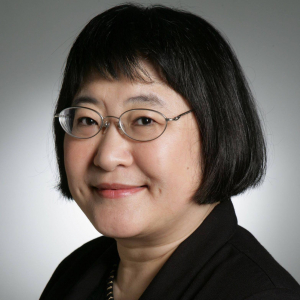#188– February 27, 2023

I.Praying for Rain
https://www.youtube.com/watch?v=viJ2-8GPm3M
II.Song of the Chu
https://www.youtube.com/watch?v=IB0PjKH7FhM
III.Shifan Gong and drum
https://www.youtube.com/watch?v=2HskbXldS-s
Ba Yin, by Chinese – American composer Chen Yi is our Composition of the Week.
Ba Yin was composed in 2001 for Saxophone Quartet and Chamber Orchestra and adapted by the composer for chamber winds in 2015.
The premiere performance in the Chamber Orchestra version took place in Stuttgart, Germany, on October 27, 2001, by the Rascher Saxophone Quartet and the Stuttgart Chamber Orchestra.
The version for Wind Ensemble was premiered by the Prism Quartet and the University of Missouri-Kansas City Wind Symphony on October 4, 2015, with Steven D. Davis conducting.
This version is scored for Solo Saxophone Quartet and 1111/1110.Percussion (2)
Ba Yin has a duration of 19 minutes, and it is structured in three movements.
1.Praying for Rain; 2. Song of the Chu; 3. Shifan Gong and Drum.
“In ancient China, the music was played with eight kinds of instruments made of or with metal, stone, silk, bamboo, gourd, clay, leather, and wood. It was then called “The Eight Sounds” (Ba Yin). In my concerto Ba Yin, I use a saxophone quartet and a chamber wind ensemble to recall my impression of what I have heard in China, the music played by villagers on old traditional instruments in various ensembles.
The first movement is entitled “Praying for Rain”. It’s inspired by the music played in the ritual ceremony, featuring the blown instruments suona (shawn, made with wood) and sheng (free-reed mouth-organ, made with gourd). The music is from slow to fast. The wind ensemble provides sheng-like sustained chords in the background while the quartet plays in heterophonic style imitating the tunes played by a group of suona players.
The second movement is called “Song of the Chu” (name of a country in Zhou Dynasty, located in the middle of China). It’s influenced by a traditional Chinese instrumental solo piece with the same title, featuring the sound of xun (wind instrument, made from clay). The quartet and the wind ensemble imitate a group of xun with crying sound, and the harmony of metal bells and stone chimes.
Shifan Gong-and-drum, the title of the third movement, is taken from the name of the ensembles of “silk-and-bamboo with gong-and-drum” in the Southeast. Shifan (literally ‘Ten times’) means ‘multiple variation’. ‘Silk-and-bamboo’ refers to string and wind instruments. When the quartet plays the melodic textures, the wind ensemble imitates a whole group of percussion instruments. The music is brought to a climax at the end of the concerto.” (program notes by Chen Yi)
Chen Yi holds bachelor’s and master’s degrees in music composition from the Central Conservatory of Music in Beijing, and DMA from Columbia University in the City of New York, studying composition with Wu Zuqiang, Chou Wen-chung and Mario Davidovsky.
As a distinguished professor at the University of Missouri-Kansas City Conservatory of Music & Dance, a prolific composer and recipient of the Ives Living Award from the American Academy of Arts and Letters, Dr. Chen blends Chinese and Western traditions, transcending cultural and musical boundaries. Her music has reached a wide range of audiences and has inspired peoples with different cultural background throughout the world. She has been elected to the American Academy of Arts and Sciences in 2005.
Chen Yi was the first woman to receive a master’s degree in composition in China (June 1986) when she gave an evening concert of her orchestral works in Beijing, performed by the Central Philharmonic of China. She is also the first woman to give an evening multimedia orchestral concert in the U.S. during her three-year residency with The Women’s Philharmonic and Chanticleer (May 1996), supported by Meet the Composer. She has given two more whole evening concerts of her orchestral and choral works presented by the China National Symphony Orchestra and Chorus in 2001 and 2008 and was appointed to the Cheungkong Scholar Visiting Professor at the Central Conservatory by the China Education Ministry in 2006, and the Distinguished Visiting Professor at the Tianjin Conservatory in 2012.
Other works for winds include:
- Suite for Cello and Chamber Winds (2004)
- Wind (2011)
- Dragon Rhyme (2010)
- Suite from China West (2008)


